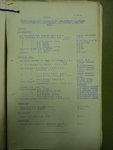...
Third, you really should check on how often Spitfires were sent out to cover the return of USAAF bombers, after they'd had their original escort drawn away, and suffered a mauling.
They also covered the bombers on the 'outbound' part of the sorties. Spitfires giving at least as they got vs. the LW in such missions/tasks?
Fourth, trials on the U.S.-modified Spitfires were halted because the "work" done on the wings had, in the Air Ministry's view, weakened the structure enough to make the aircraft not combat-worthy. The U.K. worked with flexible tanks, aka "Mareng bags," which enabled the wings to retain their integrity.
The Supermarine also installed double skinning, above and under the leading edge tanks, so the wings retain their shape as the fuel is consumed.
...
The British could have stretched the Spitfire in the same way the Corsair was having a larger main tank in a longer fuselage or perhaps rearranged the wing.
IIRC the Corsair retained the length, but the cockpit was moved further back to accommodate fuel tank between engine compartment and cockpit. Spitfire already had such an arrangement, though.
The Spitfires wing had leading edge tanks which were conversions of the evaporated cooling system abandoned long before the war started. The bays were still pretty much still as originally laid out, why not a re design with 2 x 0.5in mgs in the outer part of the wing and the inner part for extra fuel, with an extra tank behind the pilot and drop tanks, it could be useful. The Mustang would always hold the upper hand because of its low drag. However for much of the war the British were occupied with getting the better of the FW190 and later Bf109s, putting bigger tanks inside a bigger fuselage wouldn't do that.
I'd say that technicalities were a far smaller obstacles than current doctrine
Once the Spitfire received 2-stage engines, it was at least as good as LW fighters*, and it is unfortunate that bigger internal fuel tankage was not higher on the priority list (while acknowledging the increase in fuel the Mk. VII and VIII received). The 2-stage engines provided the edge in RoC above 20-25000 ft vs. LW.
* not forgetting the 1939-early 1941 period, too.

